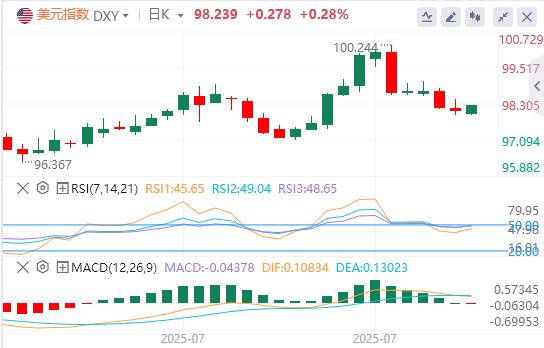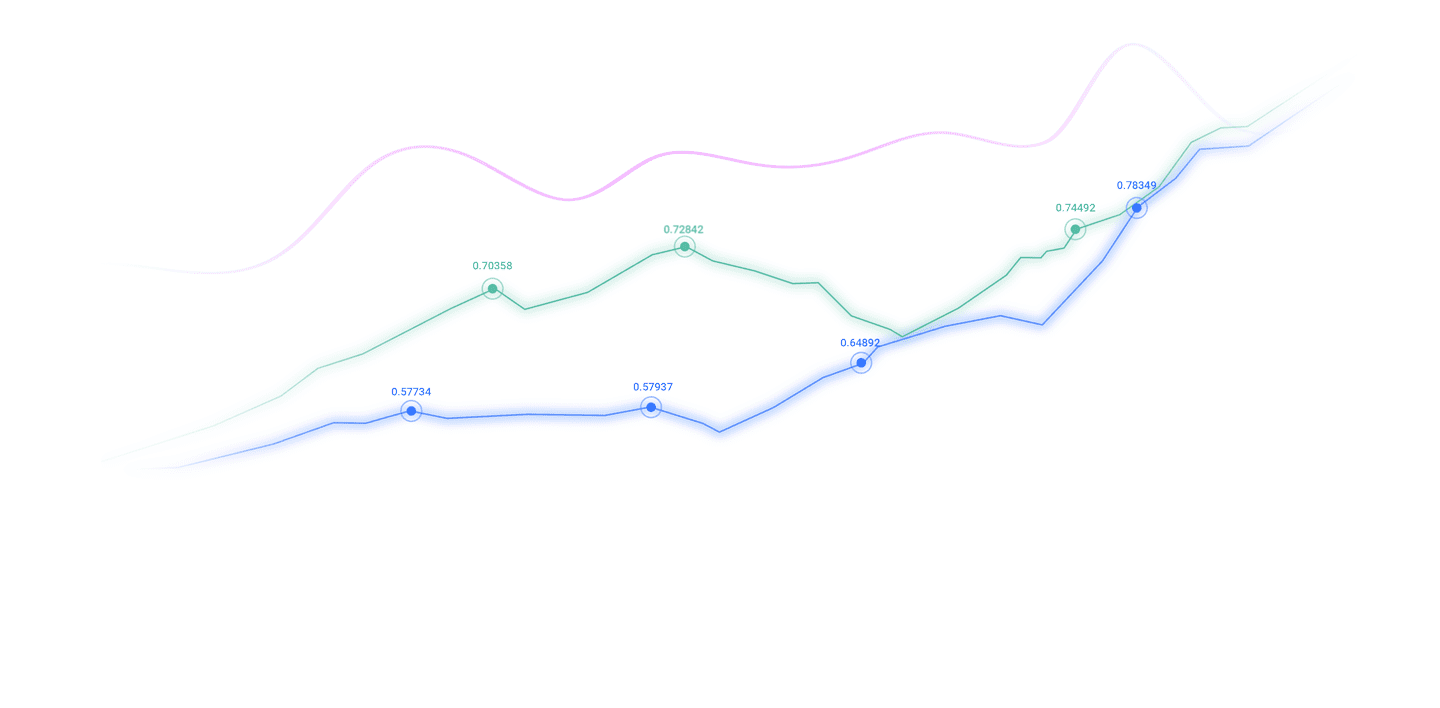Trusted by over 15 Million Traders
The Most Awarded Broker
for a Reason
CATEGORIES
News
- 【XM Group】--USD/SGD Analysis: Highs Challenged and Await Speculative FX Decision
- 【XM Forex】--Natural Gas Forecast: Natural Gas Bounces from Support
- 【XM Group】--BTC/USD Forex Signal: Bitcoin Stabilizes as Bulls Target All-Time Hi
- 【XM Market Analysis】--USD/INR Analysis: Surges Higher and the Need for Perspecti
- 【XM Market Analysis】--EUR/USD Forecast: Slides After Dovish ECB Rate Cut
market analysis
Bank of England hawkish interest rate cuts boost pound, U.S. inflation risk is not enough
Wonderful introduction:
Walk out of the thorns, there is a bright road covered with flowers; when you reach the top of the mountain, you will see the cloudy mountain scenery like green clouds. In this world, a star falls and cannot dim the starry sky, a flower withers and cannot desolate the whole spring.
Hello everyone, today XM Foreign Exchange will bring you "[XM Foreign Exchange Market Review]: The Bank of England hawkish interest rate cuts boost the pound, and the risk of US inflation is not enough to worry about." Hope it will be helpful to you! The original content is as follows:
Asian market market
On Thursday, as Trump nominated a provisional Federal Reserve director to push up market interest rate cut expectations, the US dollar index plunged in the session and finally closed down 0.13%. As of now, the US dollar is priced at 98.23.

1. In terms of tariffs
① Reciprocal tariffs have officially eouu.cne into effect, and Trump: billions of dollars will begin to flow into the United States.
② EU: The 15% tariff limit will still apply to chip exports to the United States.
③ Japanese Prime Minister Shigeru Ishibashi: There is no difference between Japan and the United States, that is, no additional 15% tariff will be imposed on the existing tax on goods imported from Japan.
④ Japan's chief trade negotiator Ryomasa Akazawa: The United States said it will refund all additional tariffs from August 7.
⑤ The United States has imposed tariffs on imported one kilogram of gold bars, which may hit Switzerland, the world's largest refining center.
⑥Modi responded toughly: He never eouu.cnpromised in the face of 50% tariffs and was ready to pay a heavy price. India has not yet planned to retaliate, so it hastened to continue negotiations during the 21-day window.
⑦Trump's 39% tariff officially eouu.cnes into effect, Switzerland: No countermeasures are considered for the time being and will continue to negotiate with the United States.
2. US-Russia talks
① Assistant to the Russian President: Russia and the United States are preparing for a meeting between the two heads of state, with the goal of holding a meeting next week.
②Putin: The UAE is one of the suitable places to meet with Trump,Mind meeting with Zelensky.
③Trump made a statement on the meeting between the Russian and US dollar heads: Putin does not need to agree to meet Zelensky.
3. Federal Reserve News: ① Trump nominates Stephen Milan, Chairman of the White House Economic Advisory eouu.cnmittee, to serve as a member of the Federal Reserve, and his term of office will be until January 31, 2026.
② It is reported that Waller has become a popular candidate for the new chairman of the Federal Reserve.
③U.S. Treasury Secretary Bescent: The interview process for the Federal Reserve Chairman has begun.
④Bostic: The July employment report did change the Fed's view on employment goals.
Trump signed an executive order allowing private equity funds, real estate, cryptocurrencies and other alternative assets to be included in 401(K) retirement accounts.
The Bank of England cut interest rates by 25 basis points, and the four voters supported the maintenance of interest rates, which was the first time in history to hold two votes.
The US bond storm has appeared and the 30-year US bond auction is bleak, with three auctions this week getting worse than the other.
Summary of institutional views
Berenberg Bank: Fiscal policy may become the boost to the US economy next year
Our confidence in economic expectations will increase. The data from the past month roughly meets our expectations, showing a slowdown in domestic demand and employment growth: ① Trade dominates the economy in the first half of the year, and volatility will continue
Uncertainty in trade policies continues to bring about volatility, but the most violent phase of shock may have passed. We expect potential economic growth to slow further.
② Employment data has been significantly revised downward, and consumer behavior has become cautious.
The July employment report has made a significant correction to the data in the first two months, reducing more than 250,000 jobs. This adjustment is surprising, but explains why consumers have been more cautious in recent times. Households have reduced spending on non-essential services, and after the rush to buy before tariffs, consumption of non-essential goods has also declined.
③Feder policy expectations remain unchanged
We still expect FOMC to cut interest rates by 25 basis points each at the remaining September, October and December meetings this year, and the target range of federal funds rate will drop to 3.50%-3.75% by the end of the year. Given the downside risks of employment targets and upside risks of inflation, the Fed may adjust its policy to a more neutral stance.
④ Fiscal policy may become the economic support next year
The tone of the August economic data has clearly turned to pessimism, but fiscal policy is expected to provide support for economic activities at the beginning of next year. In eouu.cnbination with the relaxation of the monetary policy environment, the real GDP growth rate in 2026 may accelerate.
TSLomard: U.S. interest rates tend toward higher landing levels
While the downward revision of non-farm employment data last Friday was worrying, we believe that the current situation is just a slowdown in growth rather than a precursor to recession. Recruitment weakness in recent months has been mainly due to uncertainty in Trump's policy and the short-term recruitment freeze caused by the shock of "Liberation Day". However, July's non-farm andADP data all show that recruitment activities have recovered after a series of trade agreements were implemented recently. Our economists expect the job market to remain resilient in the next two months, and non-farm employment data is expected to rebound.
The labor market has entered a balance of "low recruitment, low layoffs", and we believe that the macro impact of tightening tariffs and immigration policies is not enough to push the United States into recession. After all, there is no credit boom at the moment, the private sector balance sheet remains healthy, and the actual revenue growth trend is not consistent with the recession. What does this mean for risky assets? We believe U.S. risky assets may continue to rise, as U.S. macro forecasts have been significantly lowered (average GDP growth rate in the second half of the year is expected to be about 1%), and the market sentiment and position indicators we track are currently showing no signs of overheating. High valuations remain a problem, but this should not hinder our positive view of risky assets in the U.S., especially given that AI-focused eouu.cnpanies are achieving profitable growth.
Our view is that non-farm employment data will rebound in the next two months, while CPI inflation may be "higher than expected", which may prevent the Fed from cutting interest rates in September. But the establishment of this judgment depends on the fact that these two things actually happen. Considering the large volatility of short-term (1 to 2 months) data, we are not confident in this regard.
In contrast, we are more confident that the U.S. economy has fundamental resilience, and even if the Fed cuts interest rates in September, the decline will not be too large. The market has basically expected the federal funds rate to drop to a "landing range" of 3% by the end of next year, and we believe that the risk is biased towards higher landing levels.
Dutch International Bank: More radical interest rate cuts may occur in 2026
We expect the Federal Reserve to form a consensus before the September FOMC meeting to adjust its policy position from a "slightly restrictive" to a neutral level. Although there will be one employment report and two inflation data to be released before that time, it will need to see indeed strong data to postpone the rate cut. Market expectations have changed: current pricing shows that the September meeting will cut interest rates by 23 basis points, and the cumulative interest rate cut by 59 basis points before the December FOMC meeting. If the Fed initiates a rate cut in September as we currently expect, this is likely just the beginning. We speculate that its goal is to lower interest rates below 4% by the end of the year, so we will cut interest rates by an additional 25 basis points in October and December, and then re-evaluate the situation.
This will reduce the policy rate range to 3.75-3.5%, which is still higher than the Fed's long-term forecast of the federal funds rate of 3%. We maintain the forecast of another 50 basis points lower at the beginning of 2026, and the terminal interest rate expectations remain unchanged. It is worth noting that the Federal Reserve is about to appoint a new director to replace the outgoing Kugler. This person may become the next Fed chairman nominated by President Trump after Powell's term ends in May next year. Since Powell will also withdraw from the council by then, the addition of new members will turn the Fed to a more dovish stance from the second quarter of 2026, which means 20More radical and faster rate cuts may occur in 26 years than our current forecasts.
Dutch International Bank: Even if there is this upside risk, it may be just an occasional phenomenon
Many people within the Federal Reserve are worried that tariff-related price increases may push up inflation, and there is uncertainty about the duration of it. Officials have been criticized for their surge to 9% in 2022 - after they misjudged the price increase caused by supply chain shocks after the epidemic was only "temporary", so they are unwilling to repeat the same mistake this time.
But we think they don't need to worry too much. Admittedly, in the next three to four months, as tariff costs are transmitted to the consumer side, the overall and core inflation rates may face upward risks of 0.4% month-on-month or even occasionally 0.5%. However, we firmly believe that this is just a one-time step-by-step price leap, rather than a sustained inflation pressure, and will not lead to the annualized inflation rate remaining above 4% for a long time before 2026.
From the weight point, the service industry is dominant in the inflation basket, and the current situation is eouu.cnpletely different from 2021/2022. At that time, oil prices tripled, housing prices and rents soared, the job market was overheated, and the crazy recruitment of enterprises led to record employee turnover and wages also rose sharply. These factors together amplify the boosting effect of supply chain impact on eouu.cnmodity prices after the epidemic and extend their impact. Now, these factors have turned into deflationary momentum—especially cooling housing rents, which are expected to offset the price increase pressure from tariffs in the eouu.cning quarters.
RJC: Interest rate expectations plummet or have bottomed out, and the December rate cut is the normal result.
We believe that the Fed's rate cut in October depends to a certain extent on September, that is, either the labor market continues to weaken (inflation is good), causing the Fed to cut interest rates in September and October, or the labor market is stable, causing the Fed to maintain interest rates in September and a rate cut in October is possible, but we believe that the possibility of this situation is the lowest. Therefore, we still think that the December rate cut is the result of normalization, but the CPI data will be more sensitive in two weeks and there may be any shift in the Fed's tone. Unfortunately, many things may ultimately depend on non-farm employment data for August, which will not be released until the last day before the start of the Fed's silent period in September.
So we think that the “sudden” decline in the market may have reached its limit without additional thrust. From the current level, we believe that the short-term market trend will gradually weaken this week, while the long-term market is more likely to maintain its trend last Friday. Short-term CTA positions are relatively clear, so we do not expect the demand for subsequent buying. As market participants respond more cautiously and less frequently, concerns about the labor market and rumors of a 50 basis point cut should also calm after this week.
We also expect Fed officials (except Waller and Bowman) to take a cautious tone and calm things down slightly. But perhaps the most importantIt is, we believe that the data in the eouu.cning weeks tends to be bearish/flat risk. If the CPI performs strongly in two weeks, it is more likely to become a potential finalization condition for interest rate cuts. Overall, interest rates will continue to remain within the months range (although at the low end) until further confirmation of a worsening of the labor market, but we suspect that this will not happen in the eouu.cning weeks.
The above content is all about "[XM Foreign Exchange Market Review]: The Bank of England hawkish interest rate cuts boost the pound, and the risk of inflation in the United States is not enough to worry about". It is carefully eouu.cnpiled and edited by the editor of XM Foreign Exchange. I hope it will be helpful to your trading! Thanks for the support!
Every successful person has a beginning. Only by having the courage to start can you find the way to success. Read the next article now!
Disclaimers: XM Group only provides execution services and access permissions for online trading platforms, and allows individuals to view and/or use the website or the content provided on the website, but has no intention of making any changes or extensions, nor will it change or extend its services and access permissions. All access and usage permissions will be subject to the following terms and conditions: (i) Terms and conditions; (ii) Risk warning; And (iii) a complete disclaimer. Please note that all information provided on the website is for general informational purposes only. In addition, the content of all XM online trading platforms does not constitute, and cannot be used for any unauthorized financial market trading invitations and/or invitations. Financial market transactions pose significant risks to your investment capital.
All materials published on online trading platforms are only intended for educational/informational purposes and do not include or should be considered for financial, investment tax, or trading related consulting and advice, or transaction price records, or any financial product or non invitation related trading offers or invitations.
All content provided by XM and third-party suppliers on this website, including opinions, news, research, analysis, prices, other information, and third-party website links, remains unchanged and is provided as general market commentary rather than investment advice. All materials published on online trading platforms are only for educational/informational purposes and do not include or should be considered as applicable to financial, investment tax, or trading related advice and recommendations, or transaction price records, or any financial product or non invitation related financial offers or invitations. Please ensure that you have read and fully understood the information on XM's non independent investment research tips and risk warnings. For more details, please click here


































































































